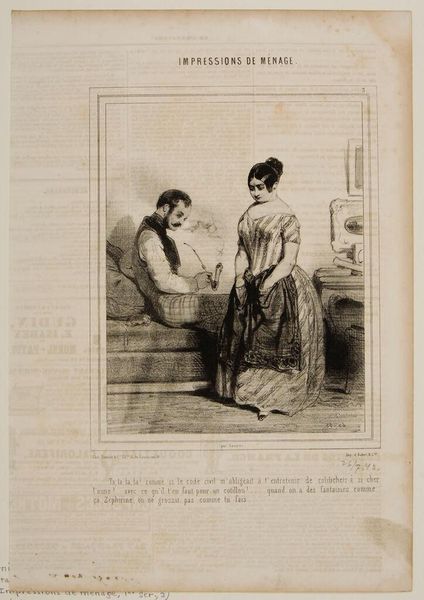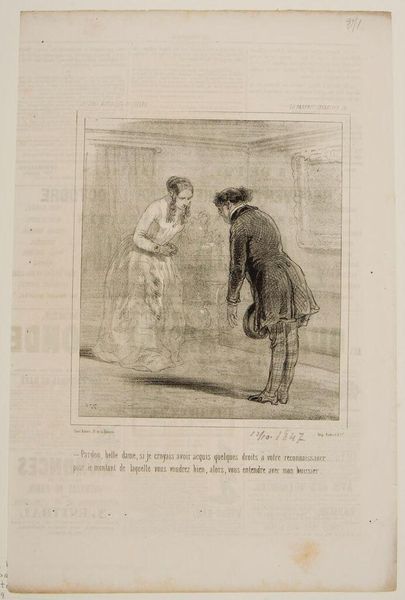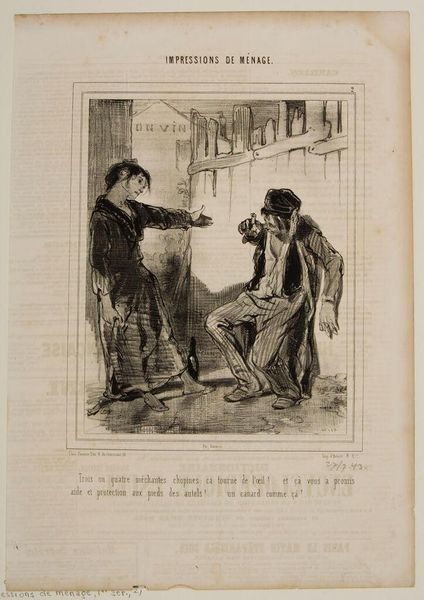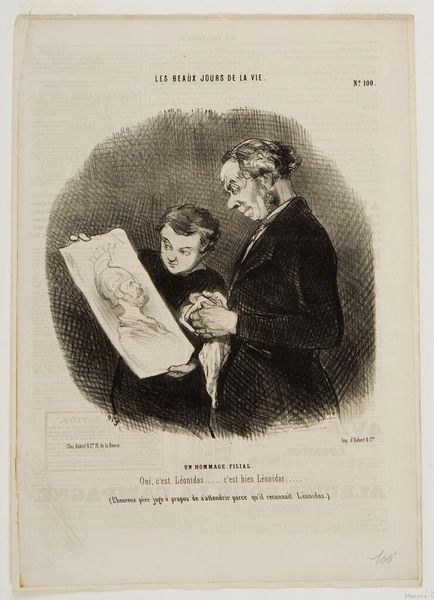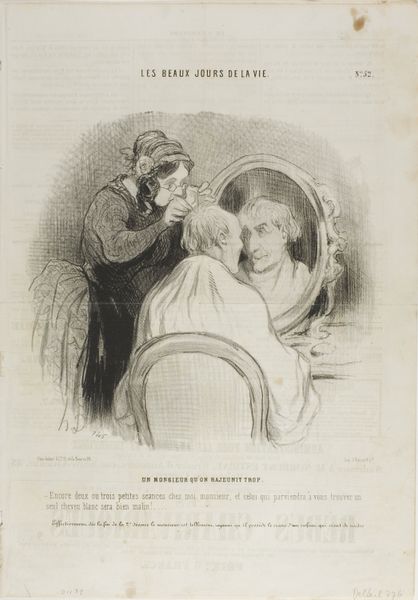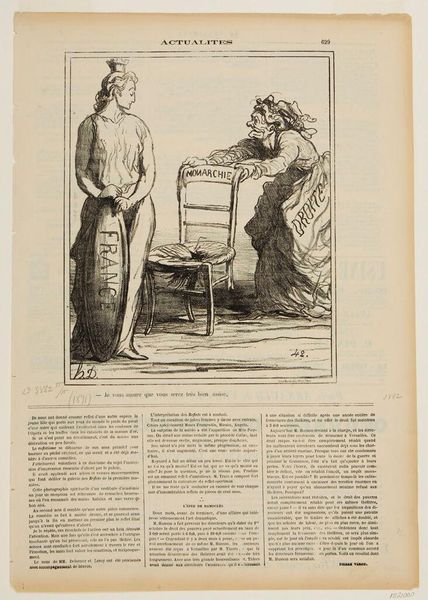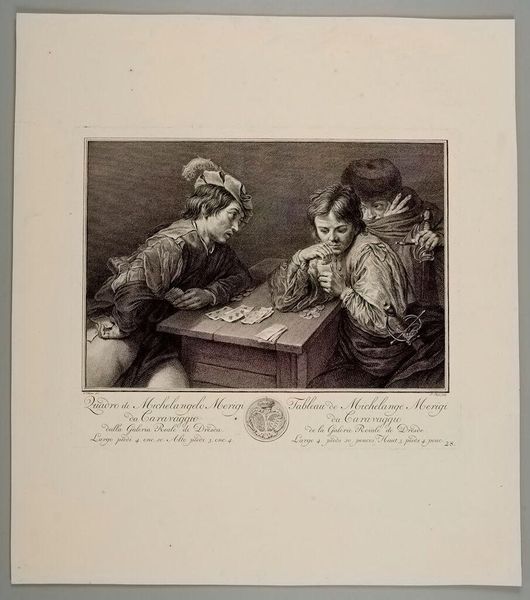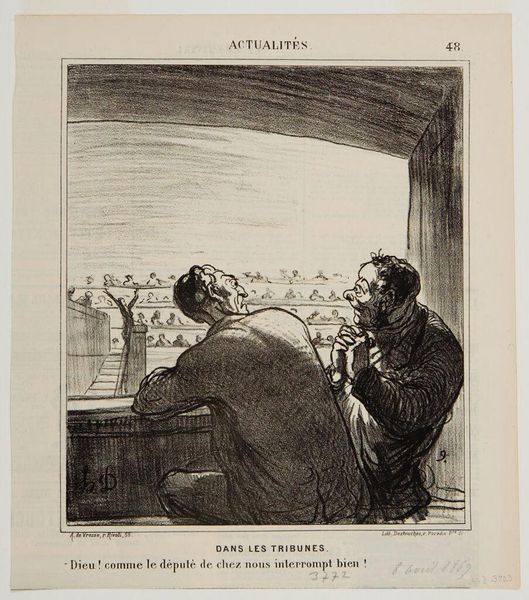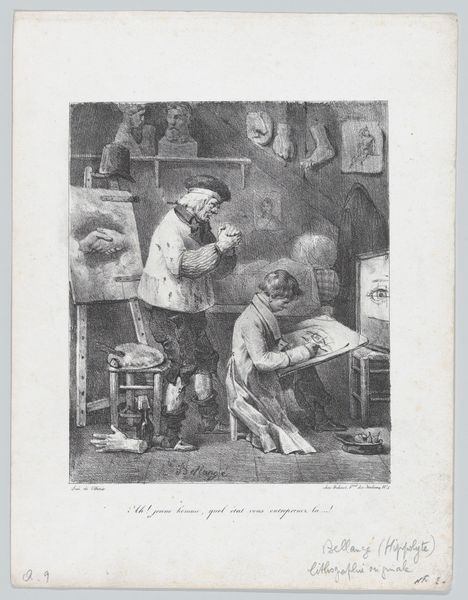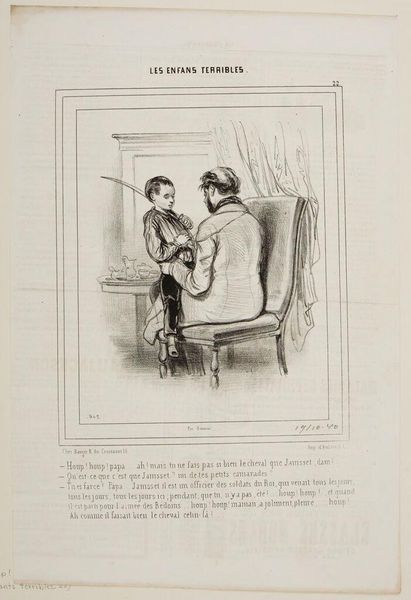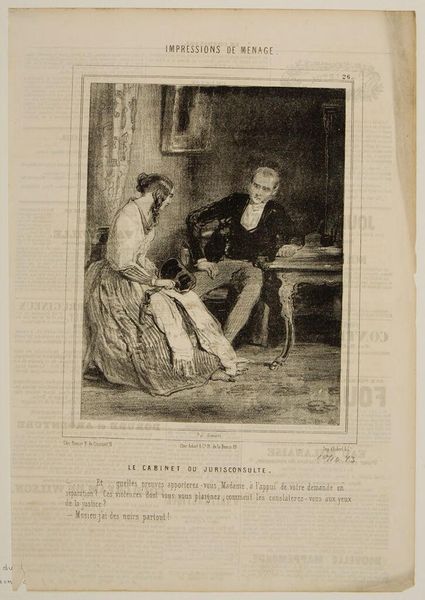
Gère m'am'celle, fod'dit pillet n'est blis tant mes mains . . . c. 19th century
0:00
0:00
Copyright: CC0 1.0
Editor: This print, "Gère m'am'celle, fod'dit pillet n'est blis tant mes mains . . ." by Paul Gavarni, presents a rather intimate scene with distinct class undertones. What cultural scripts might Gavarni be playing with here? Curator: Notice how the garment acts as a symbolic boundary, but also a point of exchange. Clothing, in this context, often reflects social status and individual identity. What does the act of handling the fabric communicate? Editor: Perhaps a negotiation, or an exchange of power? Curator: Precisely. Gavarni uses this interaction to tap into anxieties about social mobility and class relations in 19th-century France. This scene almost seems staged, doesn't it? Editor: Absolutely, the symbolism adds depth to an otherwise simple scene. I see the work carrying the weight of class struggle. Curator: Indeed, Gavarni uses the everyday to reveal deeper societal tensions.
Comments
No comments
Be the first to comment and join the conversation on the ultimate creative platform.
